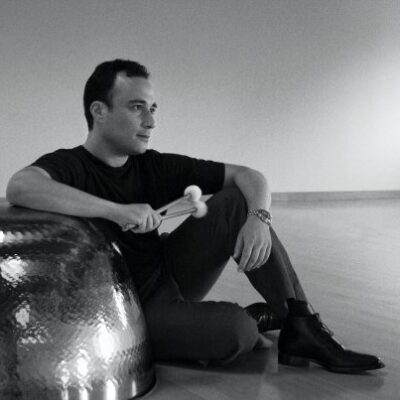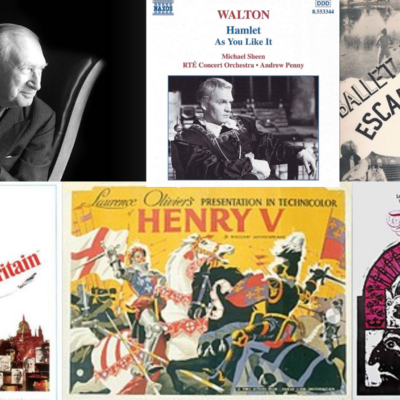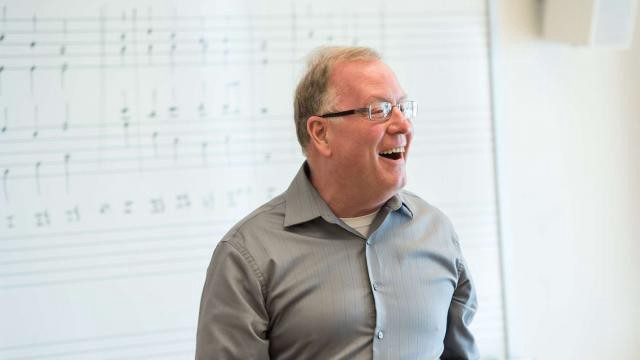
Joseph Bologne, Chevalier de Saint-Georges (1745–1799)
Overture to The Anonymous Lover (1780)
We possess a fine 1787 portrait of Joseph Bologne in which he embodies the very image of the pre-Revolutionary French gentleman: powdered wig, billowing lace kerchief, richly textured velvet coat, gloves, and an elegant rapier attesting to his fencing skill.
But there’s something just a bit different about it: Joseph Bologne was a person of color. The son of a wealthy French planter and a slave woman, he was born in the French West Indies and probably grew up in Saint-Domingue, a wealthy sugar colony with a vibrant cultural life. All that ended abruptly with the 1791 slave revolt and the establishment of the Republic of Haiti. Well before then, however, Joseph had settled in Paris, where he happily hobnobbed with the elite in their salons, clubs, and gardens.
Bologne’s two great passions were fencing and playing the violin, both of which he was an acknowledged master. His compositional output is, not surprisingly, dominated by works for violin and orchestra, but he was also an active composer of opera, of which only The Anonymous Lover of 1780 has survived intact. The three-movement Overture is distinctly Mozartean—so much so that it could almost substitute for a mid-period Mozart symphony. But that makes it no less effective as a curtain-raiser, a vivacious and well-constructed bonbon symphonique by a sadly neglected 18th-century master.
Frédéric Chopin (1810–1849)
Piano Concerto No. 1 in E Minor, Op. 11 (1830)
European music underwent rapid democratization in the early 19th century. A newly empowered middle class having imparted a distinctly consumerist spin to the arts, musicians abandoned their traditional courtly or churchly gigs in favor of seeking their boodles in the newfangled public concert halls that were springing up everywhere. Hopeful instrumentalists barnstormed Europe via the rapidly-improving roads and presented their musical offerings to customers in all plausible venues. Of course most of them washed out. But there were a few who, by some alchemy of talent, ambition, and plain old luck, found their way to wealth, celebrity, and swooning fans.
The teenage Frédéric Chopin was an unlikely candidate for the knockabout life of a touring virtuoso. Reserved, introverted, and aloof, the young Pole had no chance of becoming another matinee idol like pianist Franz Liszt or an enticing bad boy like violinist Niccolò Paganini. But he wanted to try. It didn’t take long for him to discover that he had absolutely no stomach for it. He settled in Paris, played enough recitals to achieve recognition, then established himself as a high-end piano teacher, his income bolstered with publishing royalties. For him the hurly-burly was done by the mid 1830s, and for the rest of his short life his public performances were few.
Chopin’s two piano concertos were written within a year of each other, during those early days when he still had designs on the touring circuit. They were published in the reverse order of their composition, thus Piano Concerto No. 1 in E Minor, Op. 11 is actually the second, completed by the end of August 1830. Both concertos met with reasonable success, so Chopin played them regularly during his short but impressive performing career.
The E Minor concerto demonstrates Chopin’s often-discounted skill with classical forms and genres, in particular its superb finale that celebrates the krakowiak, a high-energy Polish dance. Undoubtedly it’s the bewitching second movement, marked “Romanze,” that stands out for most listeners. Chopin described it as a movement that “rests on a beloved landscape that calls up in one’s soul beautiful memories—for instance, a fine moonlit spring night.”
César Franck (1822–1890)
Symphony in D Minor (1889)
We’ve all heard those stories about domineering stage mothers who bully, shove, and intimidate their children first into Hollywood stardom then into lifelong psychotherapy. Sadly, that sort of thing isn’t limited to show business. Pity poor César Franck, who was saddled with a grandiose, overbearing helicopter father. Nicolas-Joseph combined bristling rectitude with unbending ambition for his gifted but unspectacular pianist son. But it was no go: eventually even Monster Daddy had to admit that César was not cut out for the concert stage. A no doubt relieved César settled into a quiet life in France as piano teacher and organist, but when he fell in love and sought marriage, Mount Daddy erupted in full force. But this time Nicolas-Joseph’s bullying failed. César broke free and, upon reaching his legal majority, married Eugénie-Félicité-Caroline Saillot.
He had jumped from the frying pan into the fire. Madame Franck was yet another dominating personality who commanded that he remain in comfortable stuffiness, but his 1872 ascension to the professorship of organ at the Paris Conservatory brought about dramatic changes. Franck’s circle of spectacularly gifted students—they included Vincent d’Indy, Ernest Chausson, Henri Duparc, and Louis Vierne—encouraged the blooming of musical ideas that had been long germinating. Franck’s newfound musical potency and free-form teaching caused consternation amongst his Conservatory colleagues, who viewed him as a heretic in regards to established Conservatory methods and materials. But their concern was nothing against Madame Franck’s fury. She detested the newly-arisen sensuality in her husband’s music and blamed his students for having shepherded her trusting sheep of a husband astray.
As it turns out, the inner César Franck was more lion than lamb. During the 1880s he produced a string of dazzling compositions that combine absolute technical integrity with luscious harmonic and melodic imagination. There aren’t very many of them, but they are Franck’s priceless legacy to posterity: chamber, orchestral, and piano works combined with a series of landmark organ masterworks.
The Symphony in D Minor of 1889 occupies the center of that august company. Standing as a stern rebuke to those who characterize French music as more surface than substance, it is rigorously organized and of a resolutely serious mien, noble, majestic, and imposing—and yet threaded through with haunting beauty, vivacity, and joy. Perhaps it’s less of a fixture on orchestral programs than it used to be, but that could very well lead today’s audiences to rediscover it anew, this eloquent expression of ultimate triumph over adversity.
Program Annotator Scott Foglesong is the Chair of Musicianship and Music Theory at the San Francisco Conservatory of Music, and a Contributing Writer and Lecturer for the San Francisco Symphony. He also leads the California Symphony’s ground-breaking music education course for adults Fresh Look: The Symphony Exposed.
CHOPIN IN PARIS, with pianist Maria Radutu, takes place Saturday, February 4 at 7:30 p.m. and Sunday, February 5 at 4 p.m. at the Lesher Center for the Arts in Walnut Creek. Tickets are $49 to $79 and $20 for students 25 and under, and include a free 30-minute pre-concert talk starting one hour before the performance. Buy tickets online or call or visit the Lesher Center Ticket Office at 925.943.7469, Wed – Sun, 12:00 noon to 6:00 p.m.



